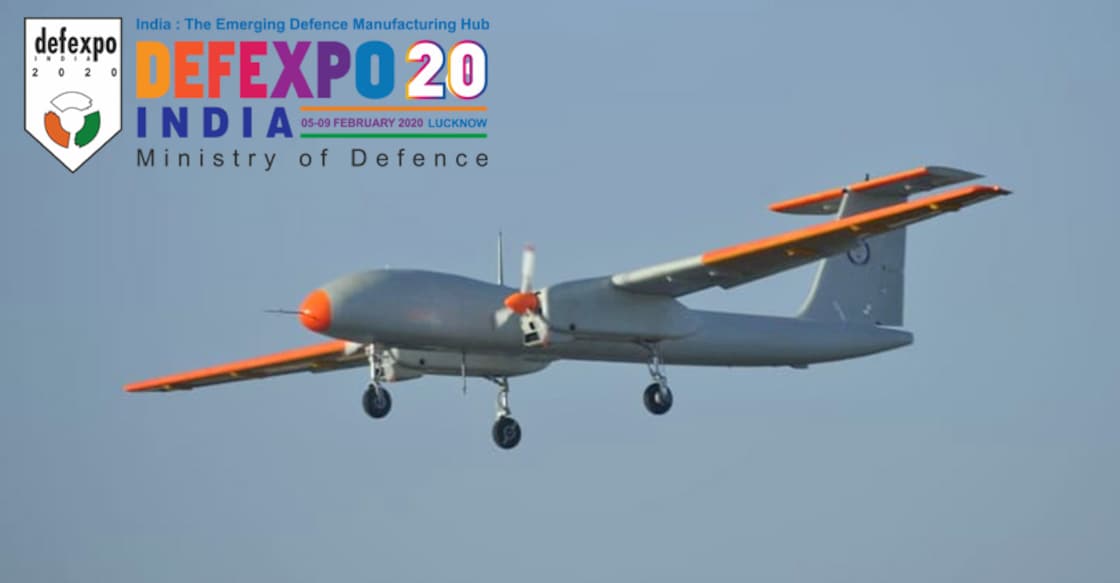Rustom-II UAV, loaded with new features, set to fly soon

Mail This Article
Lucknow: An upgraded version of Rustom-II (Tapas) - the medium-altitude long-endurance (MALE) unmanned aerial vehicle (UAV) - being developed by Aeronautical Development Establishment (ADE), is ready to take to the skies soon.
The new platform (AF-6A) being readied for its first flight will be seventh one from Rustom-II flight line. The sixth prototype (AF-6) of Rustom-II had crashed near the Aeronautical Test Range (ATR) in Chalakere (Chitradurga district, Karnataka) on September 17, 2019. (AF stands for air frame.)
ADE is a Bengaluru-based Defence Research and Development Organisation (DRDO) lab working on unmanned platforms and subsonic cruise missiles. Rustom-II, when inducted into the armed forces, will undertake surveillance and reconnaissance missions.
Rajnath inspires
It is now confirmed that the crash was due to the momentary and simultaneous link loss that prompted the UAV to enter into the ‘return home mode.’ The platform also had to encounter a rough patch of turbulence beyond the capacity of control law, resulting in the crash.
The behaviour of the UAV is being claimed to have been on the expected lines and as per the design parameters. The sensor data was available for the ground station almost till its touchdown\crash.
A scientist who is part of this project told Onmanorama that the Rustom-II team got a pep-talk from Defence Minister Rajnath Singh two days after the crash, during his visit to Bengaluru.

"He had come to visit the Tejas facilities and subsequently had undertaken a sortie on the same on September 19. Our team was called to meet him and he wanted us to resume the flight immediately," says a scientist.
The defence minister gave the team 15 days to get the UAV back into action.
"We had the 5th aircraft (AF-5) from the flight line flying on October 3, putting behind all the setbacks. The project team rose to the occasion and commenced the flying," says the scientist.
Added might

The seventh platform (AF-6A) from Rustom-II flight line set to undertake its maiden flight carries many new features. From AF-5 prototype onwards (February 2018), Rustom-II is being powered by a 180 HP Austro engine, replacing the 115 HP Rotax engine.
Among the new features embedded into the system are: a solid state relay-based low weight power distribution unit; an indigenous inertial navigation system (INS) developed by RCI, Hyderabad; Lithium ion batteries and satellite communication (SATCOM) link.
The major surveillance payloads that are now being flown are electronic intelligence (ELINT ), communications intelligence(COMINT), Synthetic Aperture Radar (SAR) and long\medium range electro optical (EO) systems.
DRDO carried out the first test flight of Rustom-II prototype in November, 2016 at the ATR. Till date, it has completed 77 development flights, including seven, post its crash.
A total of 15 platforms are being planned during the development phase, out of which last five will be the production versions.
These five will be handed over to the users for their independent evaluations.
Hindustan Aeronautics Limited will manufacture the last five variants and the scientists are working on to optimizing the design from AF-8 to AF-10.
The state-of-the-art ground control station (GCS) and image exploitation system have added more teeth to the mission. The GCS is said to have been appreciated by the UAV operators from the armed forces.
Weight reduction
Indian Army is the major stakeholder in the Rustom-II mission with a requirement for 60 platforms, followed by the Indian Air Force (12) and the Indian Navy (four).
Backed by a young team with an average age of 35 years, Rustom-II core project team consists of 30 scientists and engineers.
With overweight being a curse for most of the desi aeronautical platforms, ADE now promises to shred the ‘unwanted mass’ of Rustom-II by 260 kgs, when the new platform kisses the skies.
Weight reduction process for data link and payloads are currently on for future prototypes.
DRDO Chairman Dr G Satheesh Reddy had told Onmanorama at DefExpo2020 that delays are now being dealt with priority.
"Some of our recent missions are good examples as to how speed has become our mantra now. Things have changed a lot compared to past," he claims.
(The writer is an independent aerospace and defence journalist, who blogs at Tarmak007 and tweets @writetake.)


